1. Spiritual concept
For example, the spirit of self-motivation and perseverance in exploration. Wang Xizhi's pool ran out of ink, "All changed into ancient shapes”, Shi Zhiyong's pen became a tomb, Ouyang Xun's monument to the horse, Minanggongji Gu became a family, etc., These stories are widely circulated in the book world and the folk, vividly illustrate that an artist must go through unremitting and arduous exploration, accumulating over time., In order to reach the peak of art.
For example, Suntech's philosophy of self-cultivation, book quality and character. In the history of calligraphy, there are both the inheritance of "Tongxu" and the "entry of scattered monks into the holy"; there are both the post-learning school and the stele school; there are both the tradition of temple calligraphy Dianliyazheng and the romantic tradition of mountain atmosphere; there are even “Yitou Ru Mo” and “Shu Mao".An alternative calligrapher of "ghostwriting", but the history of calligraphy has given great tolerance to different schools and styles, forming a fine tradition of pluralistic coexistence and inclusion.
While inheriting traditions, calligraphers of all ages have continuously put forward new propositions and concepts, and continuously opened up new aesthetic realms. Calligraphy in the Song Dynasty took “innovation" as its banner. As Su Shi said, “I can't make the original with the intention of the book”, but it contains the core of inheritance; calligraphy in the Yuan Dynasty took “retro” as its call, but it embodied the spirit of innovation in its bones. Innovation is not separated from inheritance, inheritance is more innovative, and the high degree of combination of inheritance and innovation is the essence of the calligraphy tradition.
2. Technique system
Any art, whoever can be passed down for a long time, will leave a way for future generations to enter the house. This is its perfect technique system. After thousands of years of operation and construction, the art of calligraphy has formed a complete and open system of techniques. These techniques have been passed down to this day because they are a summary of the exploration, practice and successful experience of calligraphers throughout the ages, reflecting the laws of calligraphy art, and they are still effective and useful today. Whether it is the use of pen, structure, chapter method, paper, ink, style, and format, the rich experience accumulated by predecessors is undoubtedly a very valuable asset for those who study calligraphy today.
Today's people who study books do not have to explore a set of methods of combining with pens from the beginning. Through the introduction and learning of the discussions of their predecessors, inheriting the successful experience of their predecessors not only saves a lot of time and energy, but also can stand higher and see farther.
3. Personal style
Works of art are often individual. The factors of the times provide the background and conditions for the prosperity and development of art, but the ultimate achievement depends on the efforts of individuals to achieve it. Throughout the history of calligraphy, all periods of prosperity and development of calligraphy art are periods of peaks, and each peak has its own distinctive characteristics, a complete system of techniques, unique aesthetic value and eternal artistic charm.
As the peak of art in the history of calligraphy that many people look up to, Wang Xizhi has become a model for hundreds of generations with his profound technique system and high-quality style and charm. Xiao Yan commented on Wang Xizhi's calligraphy: “Wang Xizhi's calligraphy is powerful, like a dragon jumping into the heavenly gate, and a tiger lying on a phoenix. Therefore, the treasures of the ages will always be regarded as training. "Yan Zhenqing's calligraphy has opened up a new style and realm for future generations with its Dunpu and heavy style. Bao Shichen commented on Yan Zhenqing's calligraphy: “The plains are like plowing cattle, stable and conducive to civilian use. ”
After the tradition is over, it will be inherited later. If the tradition is not inherited, how can innovation be successful?
Respectful Guest "Datang Wangjushi Brick Pagoda Ming", Teacher Chu Suiliang
The art of regular script developed to the peak of the Tang Dynasty, and many famous masters appeared. In addition to Ouyang Xun, Yu Shinan, Chu Suiliang, Xue Ji, Yan Zhenqing, Liu Gongquan and others who are well known to most people, there are also a large number of famous regular script masters who were very prestigious at the time and almost unknown in later life. Their calligraphy level is extremely high, but for various reasons, especially social status and other reasons, they have been ignored by future generations. When the works they wrote reappeared in front of people hundreds of years later, they often caused amazement and yearning. Jingke is one of them.
Regarding Jingke, we can hardly find any historical information about his personal life today. The Jing clan was one of the Wang ethnic groups in the Hedong Region (now southern Shanxi) of the Tang Dynasty. There were many people with Jing names in history. But if it weren't for the excavation of the "Datang Wangjushi Brick Pagoda Ming", we wouldn't even know that this person once existed. But the high style of his regular script and the elegance of his charm are enough to make everyone in his future ashamed. The "Datang Wangjushi Brick Pagoda Ming" also proves to us the prosperity of regular script art in the Tang Dynasty.
"Datang Wangjushi Brick Pagoda Inscription" was engraved in the third year of Emperor Gaozong's Xianqing Period of Tang Dynasty (658), written by Shangguan Ganoderma Lucidum, Jingke Shudan. The inscription is engraved on a brick that is more than two feet square and wide, with seventeen characters on each side. During the Wanli Period of the Ming Dynasty (1573-1620) (1573-1620), it was unearthed in Zig Valley, Zhennan Mountain, south of Xi'an, Shaanxi Province. A corner was broken soon after it was unearthed. After that, the original brick was split into three pieces, then into five pieces, and then into seven pieces, one of which was lost. The remaining pieces were used as pillars by the villagers not long after, and have since disappeared forever. The "Yongzhou Jinshi Ji" once recorded its excavation and damage: Xiang was at Nanbaita Temple in the City of Xi'an, which is now taken by ink merchants. "Jinshi Script" Yun: "Those who came out of Zhunnan Mountain and Zig Valley near the end of the Ming Dynasty were those who came out of the soil at the end of the Ming Dynasty. When it was unearthed, the stone had split into three, and the upper half of the five elements of its "Inscription of the Brick Tower of the Great Tang King Layshi" no longer exists. The five elements in the lower half of its "Ganoderma Lucidum System of Respectful Guest Book" were split into four; the eleven lines of its "Seeking the other Side" were split into three, and the lower half was cut into fifty characters. ”This stele has prevailed in the world, and there are no less than ten reproductions of it. Compared with the original stele, it is nothing short of Xiaolu. The first tablet cracked into seven, and more than one hundred and twenty characters died. How long can the only one who remains? Therefore, remember it in preparation for the exam.
Because it broke and was damaged soon after it was unearthed, a complete copy of the "Datang Wangjushi Brick Pagoda Ming" is very rare. As far as we know, only the Shanghai Library has a full copy in its collection, with a large number of words and a complete set, and excellent ink. Because of the thinness and Xiuyi of calligraphy, it came from Chu Suiliang, a famous master of the early Tang Dynasty, who was very loved by the world, so there are more copies of it. In the engraving, Zheng Tingyang and Qian Xiang are the best. For the rubbings after the original stone is broken, there are “seven small stone manuscripts“, ”Five small stone manuscripts“, etc., While the original rubbings are better for those who are intact below the word ”exhausted“, which is called ”exhausted", which is suitable for the original stone. Reproductions circulated a lot in the Qing Dynasty. The famous scholar Lu Wenshao once said in his "Collection of the Classics" that he had seen reproductions without missing a word, and commented on the layman Wang and said: “The layman's surname is Wang Minggong, and he believes in the Shi family, but he has not become a monk.. He didn't have anything, so he followed the method of the Buddha. It said‘ "Put away the bones and start the tower’, and cover the cremation. "Another famous scholar, Qian Daxin, discussed the writing of the text in "Wangjushi Brick Pagoda Ming" in his "Qianyantang Jinshi Wenwei". Qian Daxin said: "Wang Jushi Brick Pagoda Ming" on the right. The stones of ancient and modern tombs are small and thin, and cannot be durable. Ou (Yang Xiu) and Zhao (Mingcheng) saw Zhishi, but there are no survivors today. It has only been more than a hundred years since this inscription was unearthed, and it has been split into three. This inscription is ”entangled“ as entanglement, and the ”Tang" of the "Interpretation" is also entangled, and it is also entangled. Li is the provincial text of the book, so there are many people who follow Li next to the Tang steles,瀍, and躔 characters. "Zhang Jingxun's Epitaph": "Buried in the sun of Wanjian. "Shidong of the Later Zhou Dynasty: "Nandou of the Sun." "Monument to Li Sixun": "Worry about the country." "Lu Kangzhi's "Lanting Poem": "Adequate Protection of interests." "The Monument of Kong Shitai": “The people of the sect discuss their uniforms, and they are all entangled in extreme sorrow." ”"Guang Yun" is a custom of entanglement, but it is actually a provincial literary ear. Of course, the things that need to be discussed do not stop there.
The reason why "Datang Wangjushi Brick Pagoda Ming" is loved by future generations, of course, lies first and foremost in its exquisite calligraphy art. Jingke's calligrapher Fa Chu Suiliang changed it to form his own unique artistic style of Jianba Junyi. Among the small tombstones and inscriptions handed down in the Tang Dynasty, "Wangjushi Brick Pagoda Ming" is an excellent top product and is regarded as “the most small monument." "Wang Shu, a famous calligrapher in the Qing Dynasty, once commented on "Wang Jushi Brick Pagoda Ming" in his "Xuzhou Inscription" and said: "The name of the guest is not obvious at the time, but his calligraphy is very thin and strong. If you look at Chu Gong, you know that there are many scholars in Tang Shi Neng, so you can't help but cover your ears for Jugong.”.
Today, "Datang Wangjushi Brick Pagoda Ming" is still an excellent model for us to learn the regular script of the Tang Dynasty.
"Wangjushi Brick Pagoda Ming" (clear Picture)
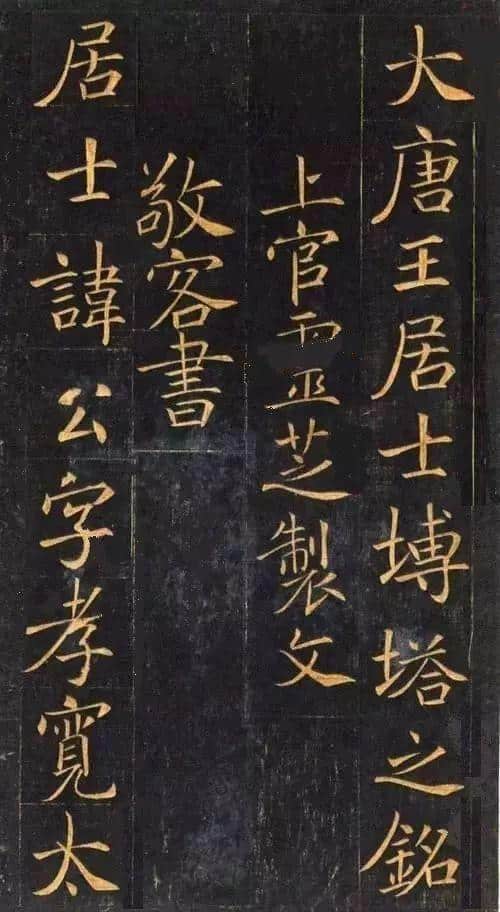
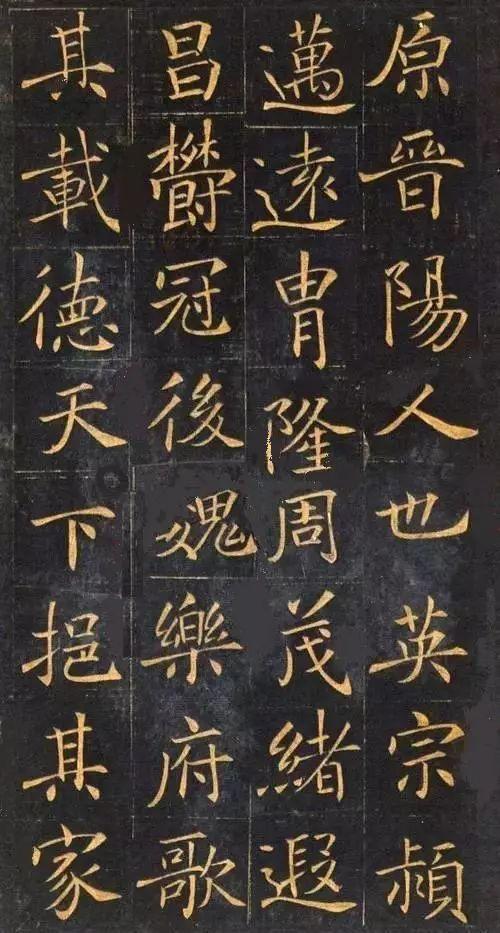
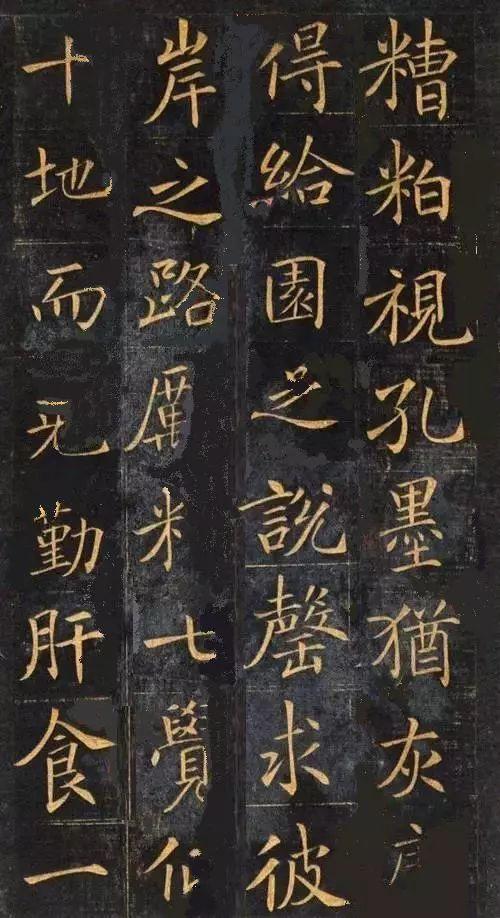
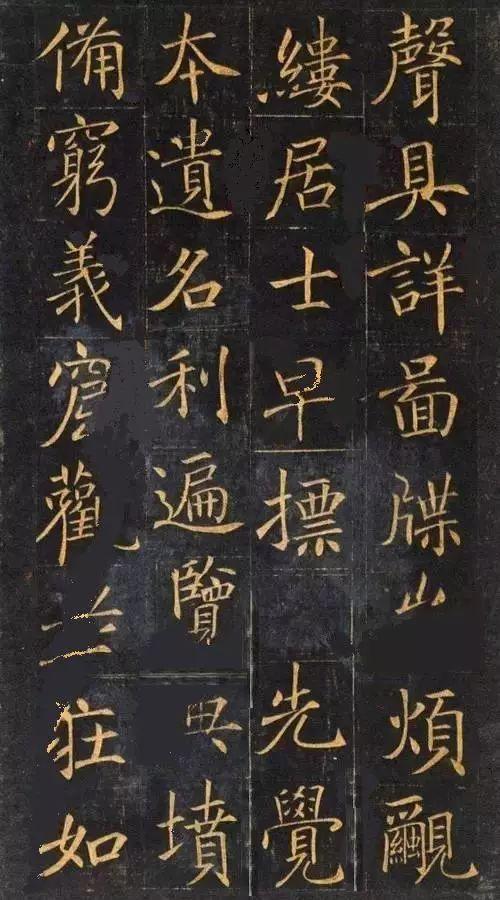
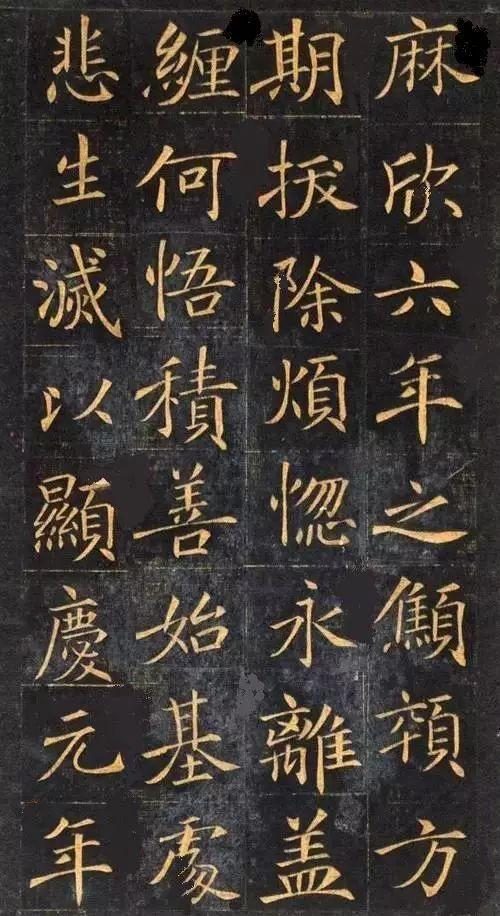
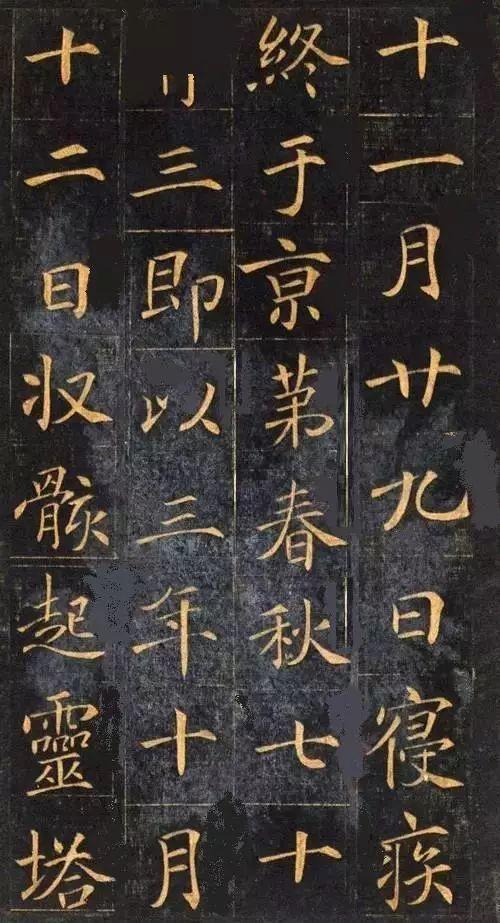
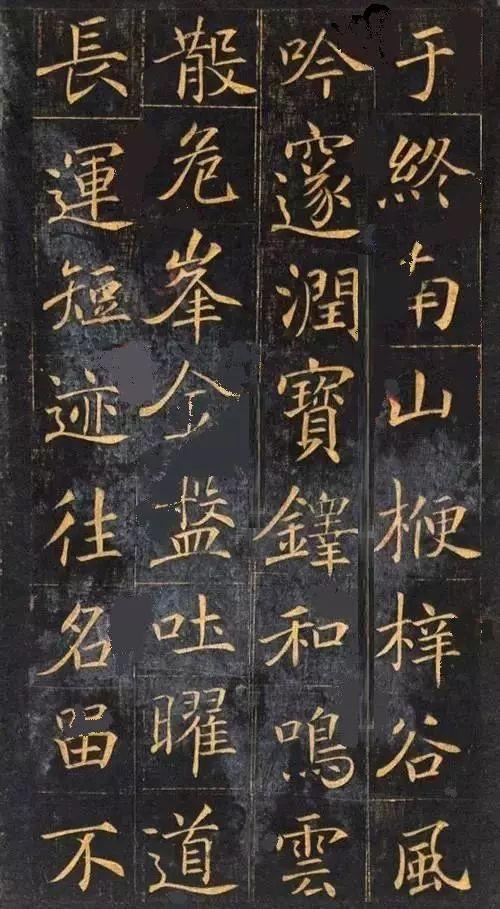
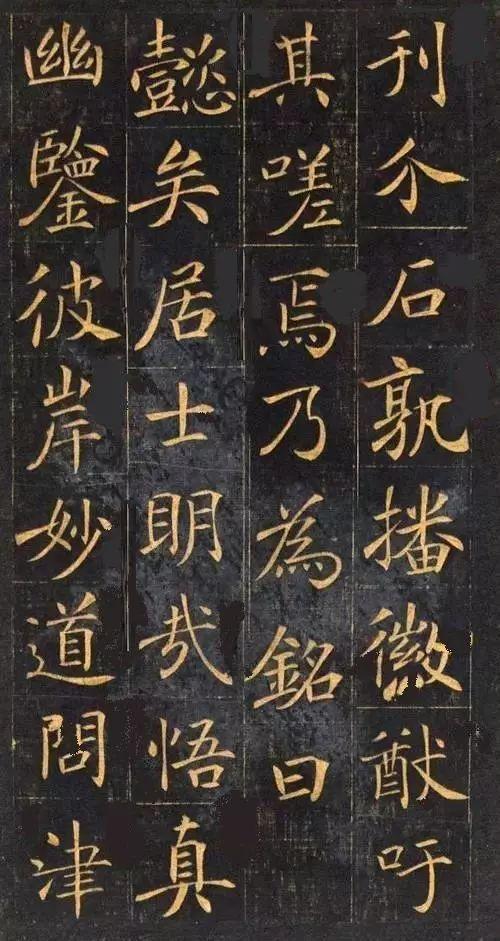
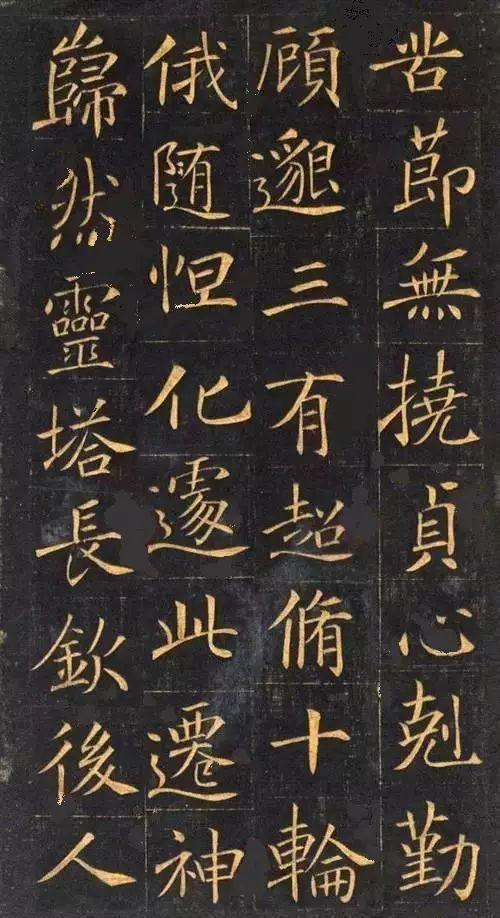
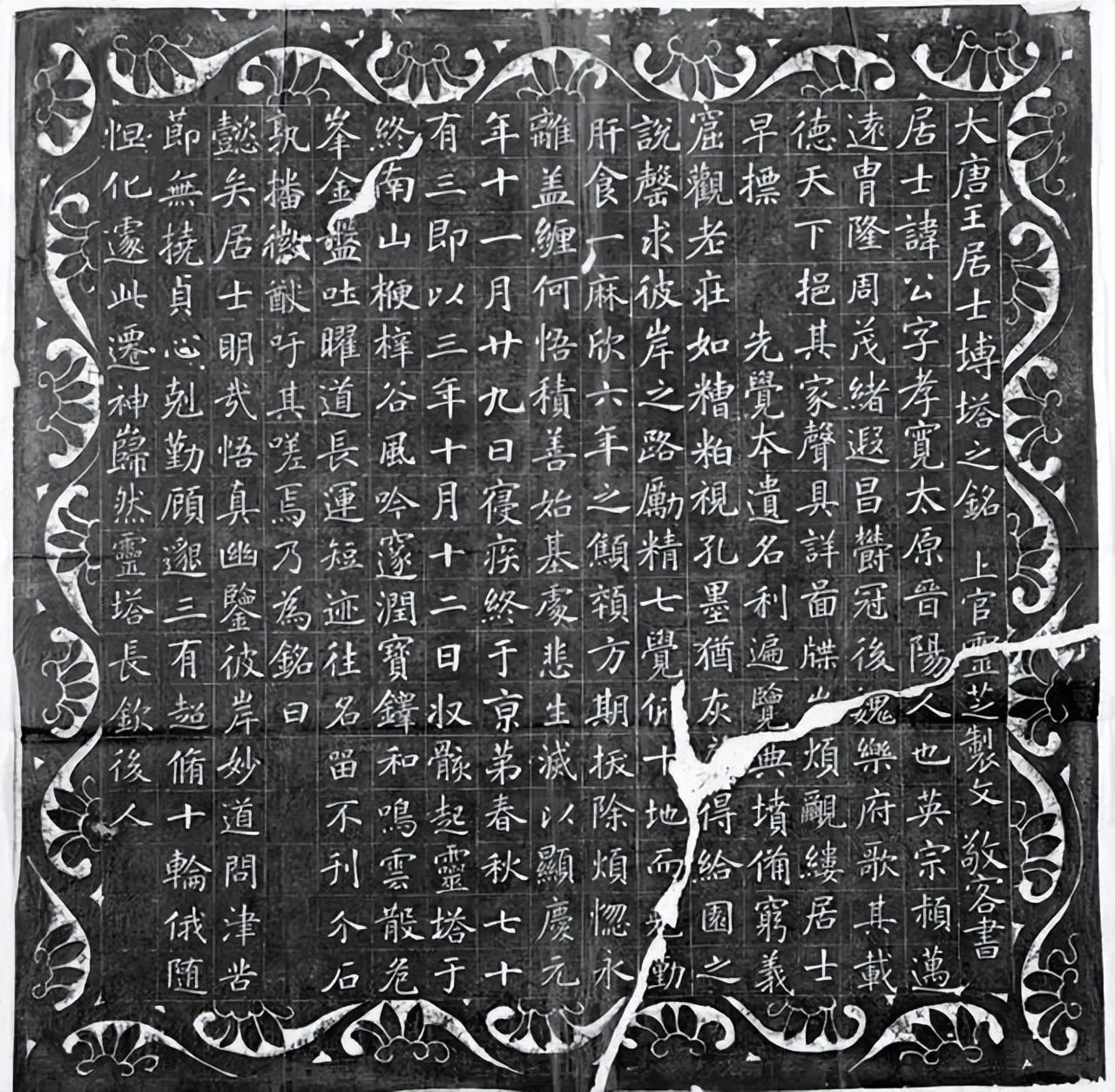


Leave a Reply